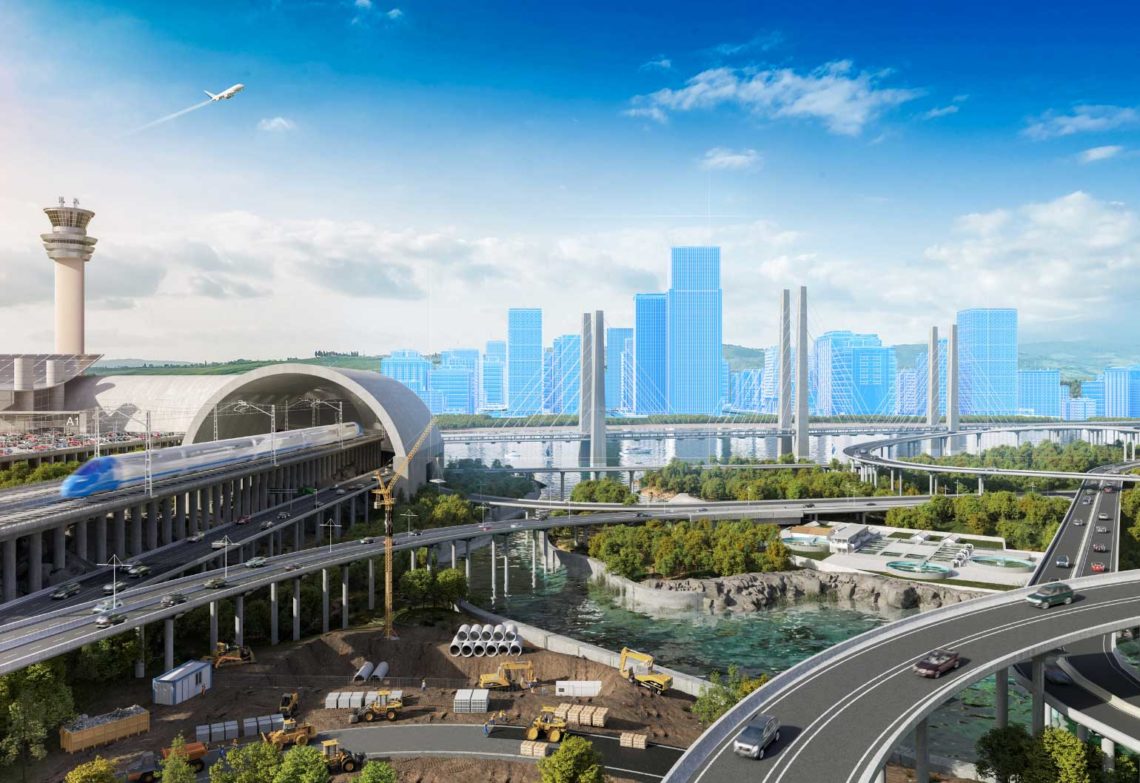For over a decade now, countries have been trying to create smart cities that address urban challenges like congestion, pollution, population growth, waste management, and energy consumption.
However, progress has been slow, and the results have been mixed. But in the last few months, the supply chain disruptions and the shift to remote working have exacerbated the need for participatory communities, urging us to examine how we live together, connect, and collaborate.
Growing urban populations, combined with depleting resources, call for interconnected and sustainable cities. And COVID-19 has reduced the timeframe to achieve this. The good news is, advances in Machine Learning, Internet of Things (IoT), and Generative Design, if leveraged effectively, could jump-start and accelerate our progress.
What is holding us back?
Despite the enthusiasm from international bodies and urban development authorities, what we currently have are smart spaces within cities, and not smart cities.
This is because most cities have simply added a layer of IoT to their existing infrastructure and systems. For example, many cities have sensor-enabled parking inventory, but this doesn’t extend to guiding a driver to the nearest empty parking space.
Given how rapidly urban environments evolve, intelligence needs to be built into its design, planning, construction, maintenance and management.
So, what is stopping us from taking the leap?
The main challenges when it comes to end-to-end digitisation are:
- The cost of digitisation
- Limited funding
- Legacy infrastructure
- Post-digitisation maintenance
- Privacy and security issues
Given that smart cities promote energy efficiency, economic growth, public safety, and sustainability, we need to find ways to address these constraints. And technologies like AI, IoT, Big Data, and Generative Design (GD) make it possible to take the planning, design, and execution of smart cities to the next level.
Accelerating smart cities with Generative Design
With over 70 per cent of the world’s population expected to be living in cities by 2050, sustainable smart cities are no longer a luxury, but a pressing need. For this, we need manufacturing, engineering, and construction to become cheaper and more efficient. And GD is integral to achieving this goal.
The limited timeframe means we don’t have the privilege to take our learnings from one construction project to the next. But with GD, we have the option to explore multiple designs without having to prototype or implement them. Thus, saving us valuable time and resources.
GD leverages AI and parametric design to quickly generate multiple designs based on designers’ requirements and constraints – cost, material, size, manufacturing/ building method, etc.
Apart from generating designs, GD algorithms conduct performance analyses to compare the designs. Hence simplifying the designing as well as testing phases. Based on the output, designers can change their requirements or constraints, to generate new designs. This creates an iterative approach that is fast and reliable.
Productivity, cost savings and sustainability
The benefits of having multiple solutions to one engineering problem are manifold. Firstly, it frees up human resources to focus on creative aspects of projects and other innovations. It also increases productivity, reduces costs, optimises products, and highlights design conflicts early in the process. GD also allows for consolidation of multiple parts, which simplifies the supply chain and maintenance requirements.
When it comes to sustainability, apart from the obvious decrease in energy and waste, GD has other indirect benefits. The reduction in raw materials leads to light-weight products, which need less fuel and energy to function, thus emitting less CO2.
Truly smart cities, not just smart spaces
Since it has applications across industries, GD can help create interconnected digitised spaces that form smart cities. It could potentially be used to:
- Plan and design urban infrastructure efficiently.
- Integrate wearable devices to create personalised experiences.
- Plan and design energy grids and mechanical systems.
- Integrate real-time sensor data to create connected communities.
- Model, plan, and simulate natural disasters and responses.
- Design and regulate traffic flows.
- Optimise water and energy usage.
Autodesk is leading the Generative Design revolution
In an effort to promote efficiency and sustainability, Autodesk has incorporated GD across its product portfolio. Whether Fusion 360 or Revit, our solutions give engineers and designers the option to explore multiple designs, produce CAD-ready editable geometry, and seamlessly integrate workflows.
Unlike topology optimisation, Autodesk’s GD solutions use form synthesis. Form synthesis mimics nature to grow new forms that resemble bone and sinew. And this helps us deliver design solutions that result in higher quality work, increased productivity, and lower costs.
Making smart cities a reality
With no time to lose, industries have to start adopting disruptive technologies to meet the growing needs of urban populations. And unlike topology or lattice optimisation, which refine existing designs, GD is revolutionary in that it creates unique design choices. By leveraging GD to its fullest potential, we can make interconnected and sustainable smart cities a reality, in the near future.
Click here to find out more about Autodesk Generative Design or connect with the author, Rod Hunt on LinkedIn.




